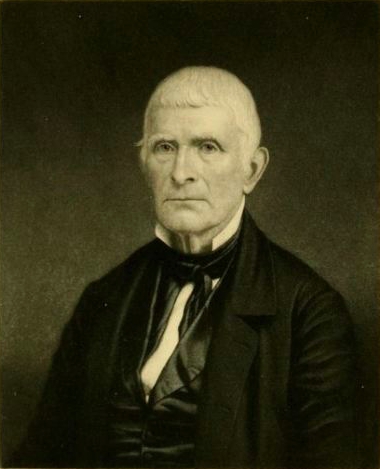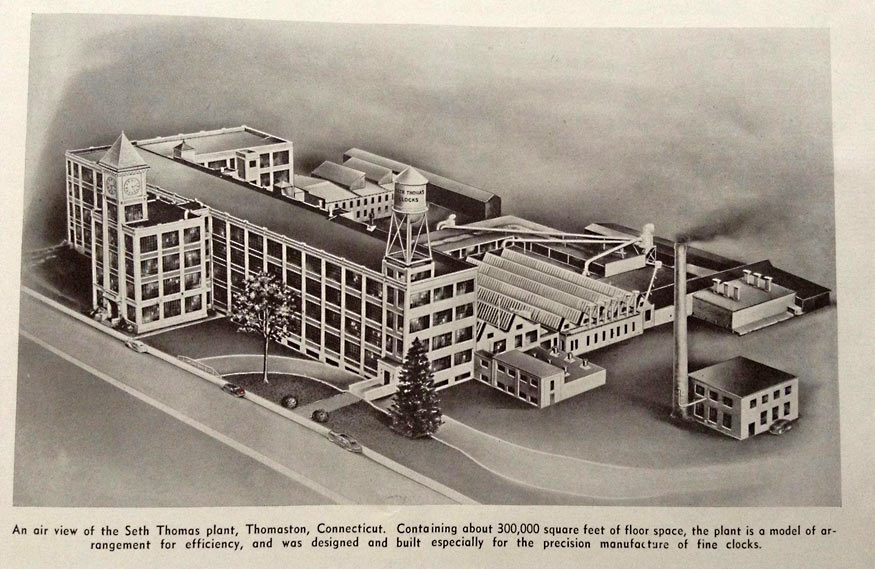Who was Seth Thomas?
Early U.S. clock making played a vital role in a budding industrial age, not long after the American Revolution. With growing social trends toward further domestication and urbanization, the luxury of timekeeping was something to be valued in any established home. As well, it was something that was becoming more and more affordable and accessible to working people. With craftsmen and tradesmen plying their skills in the New World—it was only a matter of course that some would stand out above the rest, in terms of historical significance. In this particular vignette of those times we can have a look at the clockmaker Seth Thomas. Mr. Thomas was originally a carpenter by trade, apprenticing under a master house builder. After becoming a skilled carpenter himself, he found a passion for clock making. From the beginning of this career choice, until his eventual death, Seth Thomas built a brand out of his namesake that would grow to be one of the largest clock brands in U.S. history.
Building Blocks

Clockmaking for Seth Thomas, the man (not the brand), began in 1807. He started out working for Connecticut clock making giant Eli Terry Senior. Terry himself introduced mass production to the world of clock making—and was the first American in history to achieve interchangeable parts manufacturing without government funding. Seth Thomas’s eventual partnership with Terry, as well as clockmaker Silas Hoadley, was a key reason why Thomas’s name would thrive beyond his years. Though Thomas was a bit of a conservative clockmaker, sticking to just a few styles of clock, he learned the art of mass production from Terry. Eventually the three men split to create their own clock making firms. As it went, Thomas and Hoadley bought Terry’s factory in 1810 when Terry left for further personal pursuits. By 1812 Thomas sold his share of that enterprise to Hoadley and moved his own operations to Plymouth Hollow, Connecticut in 1813. It was with this business that Thomas began making his own clocks with metal movements—instead of wood movements. 1817 saw Thomas incorporating shelf and mantel clocks into his otherwise standing-clock business. The mantel clock side of the business would become one of the most profitable and ubiquitous endeavors in Seth Thomas history—especially as the brand made its way into the 20th century.
Final Years and Legacy
By 1842, Thomas switched to the increasingly popular brass movements for his clocks. His decision to do so kept him viable in the ever evolving world of industrial clock making. Indeed: Conservative growth, careful planning, great craftsmanship, and decent volume/distribution kept Thomas’s company financially stable throughout his career. Come 1853, he incorporated the Seth Thomas Clock Company—so his sons could take over once he passed. Seth Thomas’s death came just 6 years later in 1859. He died in Plymouth Hollow, Connecticut, where his business had grown for over 40 years. Thomas’s son Aaron took over the Seth Thomas Clock Company from there and began to add more clock styles to their catalog. This would include Perpetual Calendar; Spring Driven; and Regulator clocks. Added diversification solidified the Seth Thomas Clock Company as a tour-de-force brand—making Seth Thomas the longest lasting clock brand in American history.

A couple of noted releases from the 20th century included their iconic Grand Central Station clock—which made its debut in 1913 in NYC—and their continued creation of magnificent mantel clocks/modern electric clocks. A few decades after Thomas’s son Aaron’s step down as CEO (1892), the Seth Thomas Clock Company trademarked Seth Thomas (May 7th, 1926)—under the guidance of Seth Thomas Jr. This trademarked still holds today, though Seth Thomas, as a company, went under in 1980. Despite this reality, the brand and trademark are still in legitimate circulation to this day.
Thomaston
Like his old business partner, mentor, and fellow clockmaker Eli Terry, Thomas had a town named after him in Connecticut. Because of Thomas’s impactful career, he brought a lot of revenue and acclaim to his home in Plymouth Hollow. On top of this, his residence there lasted most of his adult life—he was a true Connecticut horological hero. So in 1875 the township renamed itself “Thomaston”, and it still carries that namesake to this day. Terryville, CT is literally right next door to Thomaston—signifying the relationship this region of Connecticut has with clock making. Though the nature of business moved Thomas and Terry apart, their names continue to carry weight, together, beyond their years.
A Final Thought
The Seth Thomas brand itself has had its ups and downs beyond Thomas’s life. A lot of hand-changing, mergers, and failures have gone on throughout the 20th century—into the 21st century. However, the continued legacy of Seth Thomas’s clock making endeavors will always live at the heart of American industrial history—and its timekeeping pursuits. If you find yourself in ownership of one, especially one from the 19th century, you’re in possession of a significant piece of clock making history. Keep it clean, keep it running, and it will hold its value for years to come.
Times Ticking has been in operation for more than 30 years, since 1982. We have performed watch repair for customers both locally and internationally. If it Ticks! We KNOW it! Our team of watch repair technicians have a combined experience in watchmaking of over 120 years.

